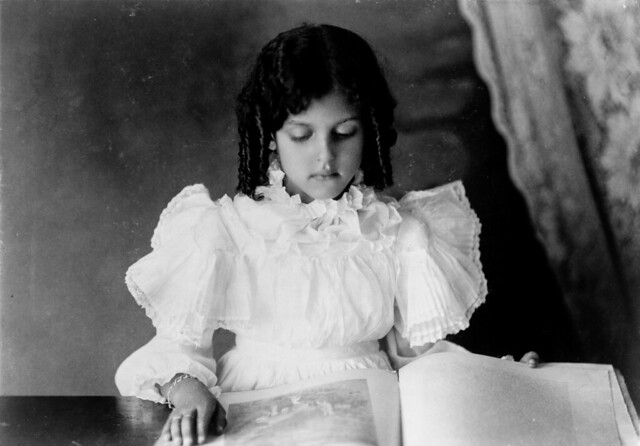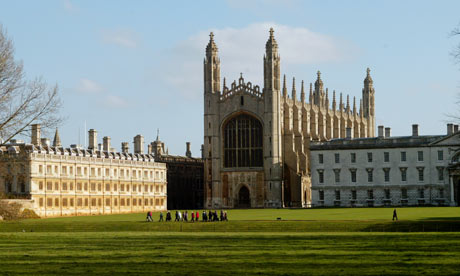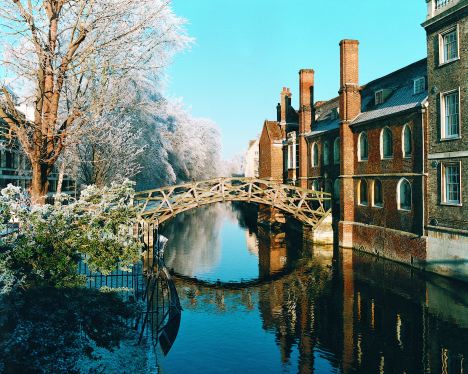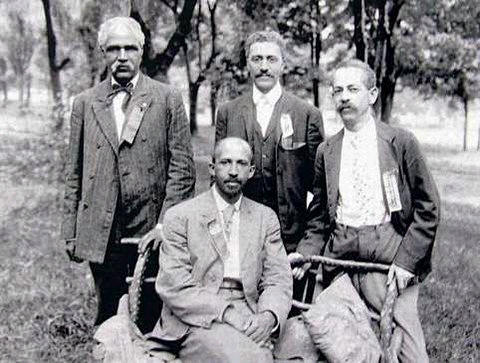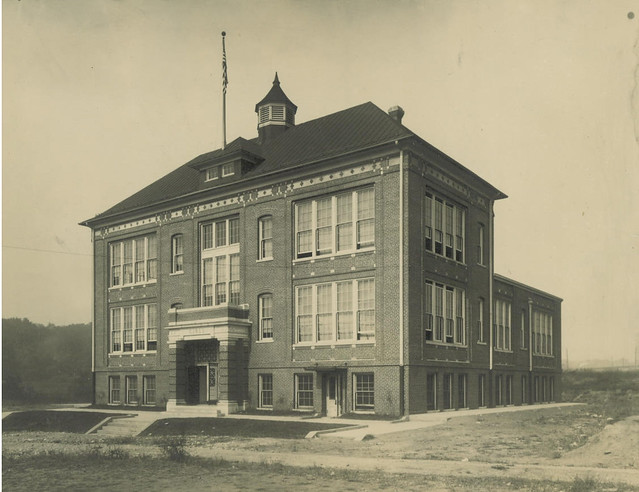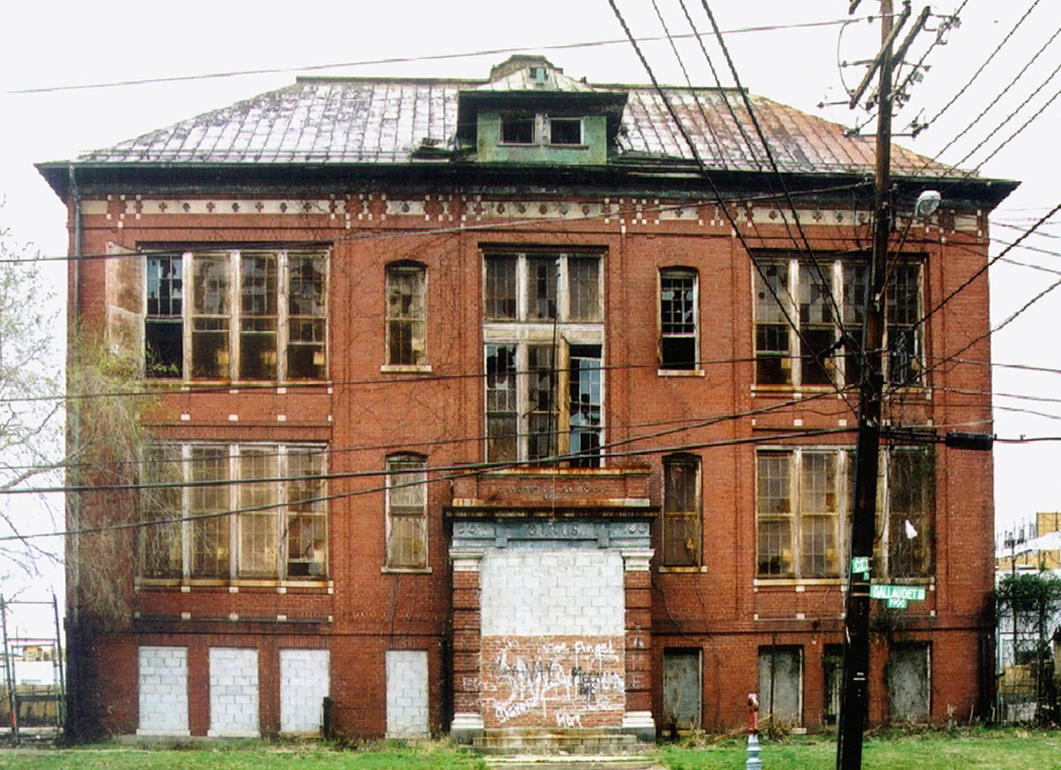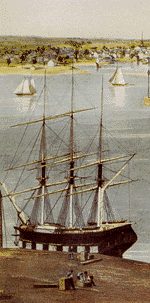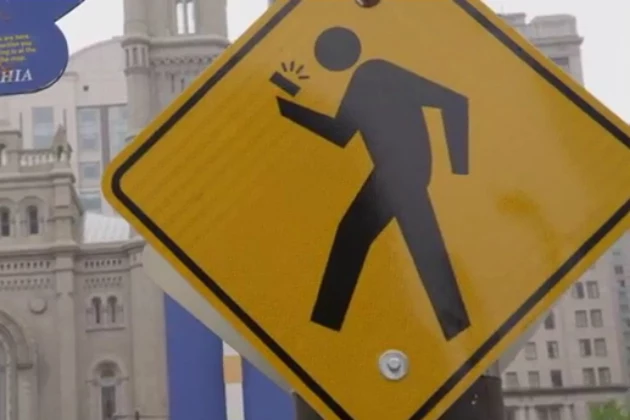W.E.B. Du Bois (1868–1963). The Souls of Black Folk. 1903.
Chapter XII: Of Alexander Crummell
THIS is the history of a human heart,—the tale of a black boy who many long years ago began to struggle with life that he might know the world and know himself. Three temptations he met on those dark dunes that lay gray and dismal before the wonder-eyes of the child: the temptation of Hate, that stood out against the red dawn; the temptation of Despair, that darkened noonday; and the temptation of Doubt, that ever steals along with twilight. Above all, you must hear of the vales he crossed,—the Valley of Humiliation and the Valley of the Shadow of Death.
I saw Alexander Crummell first at a Wilberforce commencement season, amid its bustle and crush. Tall, frail, and black he stood, with simple dignity and an unmistakable air of good breeding. I talked with him apart, where the storming of the lusty young orators could not harm us. I spoke to him politely, then curiously, then eagerly, as I began to feel the fineness of his character,—his calm courtesy, the sweetness of his strength, and his fair blending of the hope and truth of life. Instinctively I bowed before this man, as one bows before the prophets of the world. Some seer he seemed, that came not from the crimson Past or the gray To-come, but from the pulsing Now,—that mocking world which seemed to me at once so light and dark, so splendid and sordid. Four-score years had he wandered in this same world of mine, within the Veil.
John Robert Clifford, W.E.B. DuBois (seated), Monroe Trotter, Freeman Henry Morris Murray
He was born with the Missouri Compromise and lay a-dying amid the echoes of Manila and El Caney: stirring times for living, times dark to look back upon, darker to look forward to. The black-faced lad that paused over his mud and marbles seventy years ago saw puzzling vistas as he looked down the world. The slave-ship still groaned across the Atlantic, faint cries burdened the Southern breeze, and the great black father whispered mad tales of cruelty into those young ears. From the low doorway the mother silently watched her boy at play, and at nightfall sought him eagerly lest the shadows bear him away to the land of slaves.
So his young mind worked and winced and shaped curiously a vision of Life; and in the midst of that vision ever stood one dark figure alone,—ever with the hard, thick countenance of that bitter father, and a form that fell in vast and shapeless folds. Thus the temptation of Hate grew and shadowed the growing child,—gliding stealthily into his laughter, fading into his play, and seizing his dreams by day and night with rough, rude turbulence. So the black boy asked of sky and sun and flower the never-answered Why? and loved, as he grew, neither the world nor the world’s rough ways.
 Alexander Crummell
Alexander Crummell
Strange temptation for a child, you may think; and yet in this wide land to-day a thousand thousand dark children brood before this same temptation, and feel its cold and shuddering arms. For them, perhaps, some one will some day lift the Veil,—will come tenderly and cheerily into those sad little lives and brush the brooding hate away, just as Beriah Green strode in upon the life of Alexander Crummell. And before the bluff, kind-hearted man the shadow seemed less dark. Beriah Green had a school in Oneida County, New York, with a score of mischievous boys. “I’m going to bring a black boy here to educate,” said Beriah Green, as only a crank and an abolitionist would have dared to say. “Oho!” laughed the boys. “Ye-es,” said his wife; and Alexander came. Once before, the black boy had sought a school, had travelled, cold and hungry, four hundred miles up into free New Hampshire, to Canaan. But the godly farmers hitched ninety yoke of oxen to the abolition schoolhouse and dragged it into the middle of the swamp. The black boy trudged away.
The nineteenth was the first century of human sympathy,—the age when half wonderingly we began to descry in others that transfigured spark of divinity which we call Myself; when clodhoppers and peasants, and tramps and thieves, and millionaires and—sometimes—Negroes, became throbbing souls whose warm pulsing life touched us so nearly that we half gasped with surprise, crying, “Thou too! Hast Thou seen Sorrow and the dull waters of Hopelessness? Hast Thou known Life?” And then all helplessly we peered into those Other-worlds, and wailed, “O World of Worlds, how shall man make you one?”
 Alexander Crummell
Alexander Crummell
So in that little Oneida school there came to those schoolboys a revelation of thought and longing beneath one black skin, of which they had not dreamed before. And to the lonely boy came a new dawn of sympathy and inspiration. The shadowy, formless thing—the temptation of Hate, that hovered between him and the world—grew fainter and less sinister. It did not wholly fade away, but diffused itself and lingered thick at the edges. Through it the child now first saw the blue and gold of life,—the sun-swept road that ran ’twixt heaven and earth until in one far-off wan wavering line they met and kissed. A vision of life came to the growing boy,—mystic, wonderful. He raised his head, stretched himself, breathed deep of the fresh new air. Yonder, behind the forests, he heard strange sounds; then glinting through the trees he saw, far, far away, the bronzed hosts of a nation calling,—calling faintly, calling loudly. He heard the hateful clank of their chains, he felt them cringe and grovel, and there rose within him a protest and a prophecy. And he girded himself to walk down the world.
A voice and vision called him to be a priest,—a seer to lead the uncalled out of the house of bondage. He saw the headless host turn toward him like the whirling of mad waters,—he stretched forth his hands eagerly, and then, even as he stretched them, suddenly there swept across the vision the temptation of Despair.
They were not wicked men,—the problem of life is not the problem of the wicked,—they were calm, good men, Bishops of the Apostolic Church of God, and strove toward righteousness. They said slowly, “It is all very natural—it is even commendable; but the General Theological Seminary of the Episcopal Church cannot admit a Negro.” And when that thin, half-grotesque figure still haunted their doors, they put their hands kindly, half sorrowfully, on his shoulders, and said, “Now,—of course, we—we know how you feel about it; but you see it is impossible,—that is—well—it is premature.
Sometime, we trust—sincerely trust—all such distinctions will fade away; but now the world is as it is.”
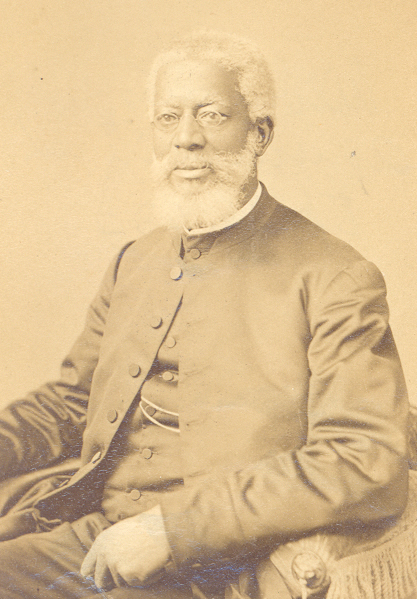 Alexander Crummell
Alexander Crummell
This was the temptation of Despair; and the young man fought it doggedly. Like some grave shadow he flitted by those halls, pleading, arguing, half angrily demanding admittance, until there came the final No; until men hustled the disturber away, marked him as foolish, unreasonable, and injudicious, a vain rebel against God’s law. And then from that Vision Splendid all the glory faded slowly away, and left an earth gray and stern rolling on beneath a dark despair. Even the kind hands that stretched themselves toward him from out the depths of that dull morning seemed but parts of the purple shadows. He saw them coldly, and asked, “Why should I strive by special grace when the way of the world is closed to me?” All gently yet, the hands urged him on,—the hands of young John Jay, that daring father’s daring son; the hands of the good folk of Boston, that free city. And yet, with a way to the priesthood of the Church open at last before him, the cloud lingered there; and even when in old St. Paul’s the venerable Bishop raised his white arms above the Negro deacon—even then the burden had not lifted from that heart, for there had passed a glory from the earth.
And yet the fire through which Alexander Crummell went did not burn in vain. Slowly and more soberly he took up again his plan of life. More critically he studied the situation. Deep down below the slavery and servitude of the Negro people he saw their fatal weaknesses, which long years of mistreatment had emphasized. The dearth of strong moral character, of unbending righteousness, he felt, was their great shortcoming, and here he would begin. He would gather the best of his people into some little Episcopal chapel and there lead, teach, and inspire them, till the leaven spread, till the children grew, till the world hearkened, till—till—and then across his dream gleamed some faint after-glow of that first fair vision of youth—only an after-glow, for there had passed a glory from the earth.

One day—it was in 1842, and the springtide was struggling merrily with the May winds of New England—he stood at last in his own chapel in Providence, a priest of the Church. The days sped by, and the dark young clergyman labored; he wrote his sermons carefully; he intoned his prayers with a soft, earnest voice; he haunted the streets and accosted the wayfarers; he visited the sick, and knelt beside the dying. He worked and toiled, week by week, day by day, month by month. And yet month by month the congregation dwindled, week by week the hollow walls echoed more sharply, day by day the calls came fewer and fewer, and day by day the third temptation sat clearer and still more clearly within the Veil; a temptation, as it were, bland and smiling, with just a shade of mockery in its smooth tones. First it came casually, in the cadence of a voice: “Oh, colored folks? Yes.” Or perhaps more definitely: “What do you expect?” In voice and gesture lay the doubt—the temptation of Doubt. How he hated it, and stormed at it furiously! “Of course they are capable,” he cried; “of course they can learn and strive and achieve—” and “Of course,” added the temptation softly, “they do nothing of the sort.” Of all the three temptations, this one struck the deepest. Hate? He had outgrown so childish a thing. Despair? He had steeled his right arm against it, and fought it with the vigor of determination. But to doubt the worth of his lifework,—to doubt the destiny and capability of the race his soul loved because it was his; to find listless squalor instead of eager endeavor; to hear his own lips whispering, “They do not care; they cannot know; they are dumb driven cattle,—why cast your pearls before swine?”—this, this seemed more than man could bear; and he closed the door, and sank upon the steps of the chancel, and cast his robe upon the floor and writhed.

Alexander Crummell School
The evening sunbeams had set the dust to dancing in the gloomy chapel when he arose. He folded his vestments, put away the hymn-books, and closed the great Bible. He stepped out into the twilight, looked back upon the narrow little pulpit with a weary smile, and locked the door. Then he walked briskly to the Bishop, and told the Bishop what the Bishop already knew. “I have failed,” he said simply. And gaining courage by the confession, he added: “What I need is a larger constituency. There are comparatively few Negroes here, and perhaps they are not of the best. I must go where the field is wider, and try again.” So the Bishop sent him to Philadelphia, with a letter to Bishop Onderdonk.
Bishop Onderdonk lived at the head of six white steps,—corpulent, red-faced, and the author of several thrilling tracts on Apostolic Succession. It was after dinner, and the Bishop had settled himself for a pleasant season of contemplation, when the bell must needs ring, and there must burst in upon the Bishop a letter and a thin, ungainly Negro. Bishop Onderdonk read the letter hastily and frowned. Fortunately, his mind was already clear on this point; and he cleared his brow and looked at Crummell. Then he said, slowly and impressively: “I will receive you into this diocese on one condition: no Negro priest can sit in my church convention, and no Negro church must ask for representation there.”
Alexander Crummell School
I sometimes fancy I can see that tableau: the frail black figure, nervously twitching his hat before the massive abdomen of Bishop Onderdonk; his threadbare coat thrown against the dark woodwork of the book-cases, where Fox’s “Lives of the Martyrs” nestled happily beside “The Whole Duty of Man.” I seem to see the wide eyes of the Negro wander past the Bishop’s broadcloth to where the swinging glass doors of the cabinet glow in the sunlight. A little blue fly is trying to cross the yawning keyhole. He marches briskly up to it, peers into the chasm in a surprised sort of way, and rubs his feelers reflectively; then he essays its depths, and, finding it bottomless, draws back again. The dark-faced priest finds himself wondering if the fly too has faced its Valley of Humiliation, and if it will plunge into it,—when lo! it spreads its tiny wings and buzzes merrily across, leaving the watcher wingless and alone.
Then the full weight of his burden fell upon him. The rich walls wheeled away, and before him lay the cold rough moor winding on through life, cut in twain by one thick granite ridge,—here, the Valley of Humiliation; yonder, the Valley of the Shadow of Death. And I know not which be darker,—no, not I. But this I know: in yonder Vale of the Humble stand to-day a million swarthy men, who willingly would
“...bear the whips and scorns of time,
The oppressor’s wrong, the proud man’s contumely,
The pangs of despised love, the law’s delay,
The insolence of office, and the spurns
That patient merit of the unworthy takes,”
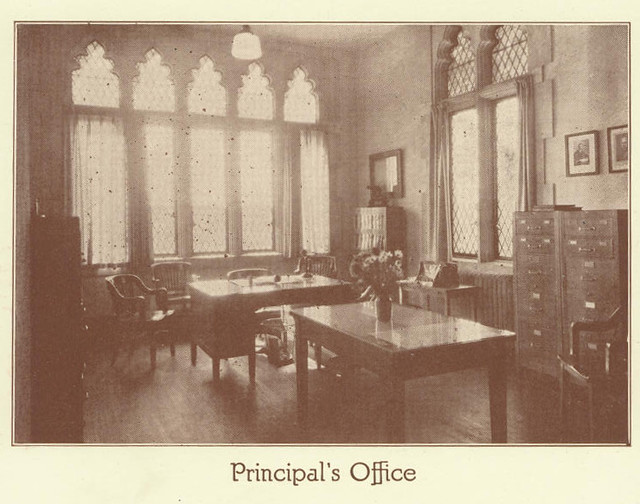 Alexander Crummell School
Alexander Crummell School
all this and more would they bear did they but know that this were sacrifice and not a meaner thing. So surged the thought within that lone black breast. The Bishop cleared his throat suggestively; then, recollecting that there was really nothing to say, considerately said nothing, only sat tapping his foot impatiently. But Alexander Crummell said, slowly and heavily: “I will never enter your diocese on such terms.” And saying this, he turned and passed into the Valley of the Shadow of Death. You might have noted only the physical dying, the shattered frame and hacking cough; but in that soul lay deeper death than that. He found a chapel in New York,—the church of his father; he labored for it in poverty and starvation, scorned by his fellow priests. Half in despair, he wandered across the sea, a beggar with outstretched hands. Englishmen clasped them,—Wilberforce and Stanley, Thirwell and Ingles, and even Froude and Macaulay; Sir Benjamin Brodie bade him rest awhile at Queen’s College in Cambridge, and there he lingered, struggling for health of body and mind, until he took his degree in ’53. Restless still and unsatisfied, he turned toward Africa, and for long years, amid the spawn of the slave-smugglers, sought a new heaven and a new earth.
So the man groped for light; all this was not Life,—it was the world-wandering of a soul in search of itself, the striving of one who vainly sought his place in the world, ever haunted by the shadow of a death that is more than death,—the passing of a soul that has missed its duty. Twenty years he wandered,—twenty years and more; and yet the hard rasping question kept gnawing within him, “What, in God’s name, am I on earth for?” In the narrow New York parish his soul seemed cramped and smothered. In the fine old air of the English University he heard the millions wailing over the sea. In the wild fever-cursed swamps of West Africa he stood helpless and alone.
 Alexander Crummell School
Alexander Crummell School
You will not wonder at his weird pilgrimage,—you who in the swift whirl of living, amid its cold paradox and marvellous vision, have fronted life and asked its riddle face to face. And if you find that riddle hard to read, remember that yonder black boy finds it just a little harder; if it is difficult for you to find and face your duty, it is a shade more difficult for him; if your heart sickens in the blood and dust of battle, remember that to him the dust is thicker and the battle fiercer. No wonder the wanderers fall! No wonder we point to thief and murderer, and haunting prostitute, and the never-ending throng of unhearsed dead! The Valley of the Shadow of Death gives few of its pilgrims back to the world.
But Alexander Crummell it gave back. Out of the temptation of Hate, and burned by the fire of Despair, triumphant over Doubt, and steeled by Sacrifice against Humiliation, he turned at last home across the waters, humble and strong, gentle and determined. He bent to all the gibes and prejudices, to all hatred and discrimination, with that rare courtesy which is the armor of pure souls. He fought among his own, the low, the grasping, and the wicked, with that unbending righteousness which is the sword of the just. He never faltered, he seldom complained; he simply worked, inspiring the young, rebuking the old, helping the weak, guiding the strong.
Alexander Crummell School
So he grew, and brought within his wide influence all that was best of those who walk within the Veil. They who live without knew not nor dreamed of that full power within, that mighty inspiration which the dull gauze of caste decreed that most men should not know. And now that he is gone, I sweep the Veil away and cry, Lo! the soul to whose dear memory I bring this little tribute. I can see his face still, dark and heavy-lined beneath his snowy hair; lighting and shading, now with inspiration for the future, now in innocent pain at some human wickedness, now with sorrow at some hard memory from the past. The more I met Alexander Crummell, the more I felt how much that world was losing which knew so little of him. In another age he might have sat among the elders of the land in purple-bordered toga; in another country mothers might have sung him to the cradles.
He did his work,—he did it nobly and well; and yet I sorrow that here he worked alone, with so little human sympathy. His name to-day, in this broad land, means little, and comes to fifty million ears laden with no incense of memory or emulation. And herein lies the tragedy of the age: not that men are poor,—all men know something of poverty; not that men are wicked,—who is good? not that men are ignorant,—what is Truth? Nay, but that men know so little of men.
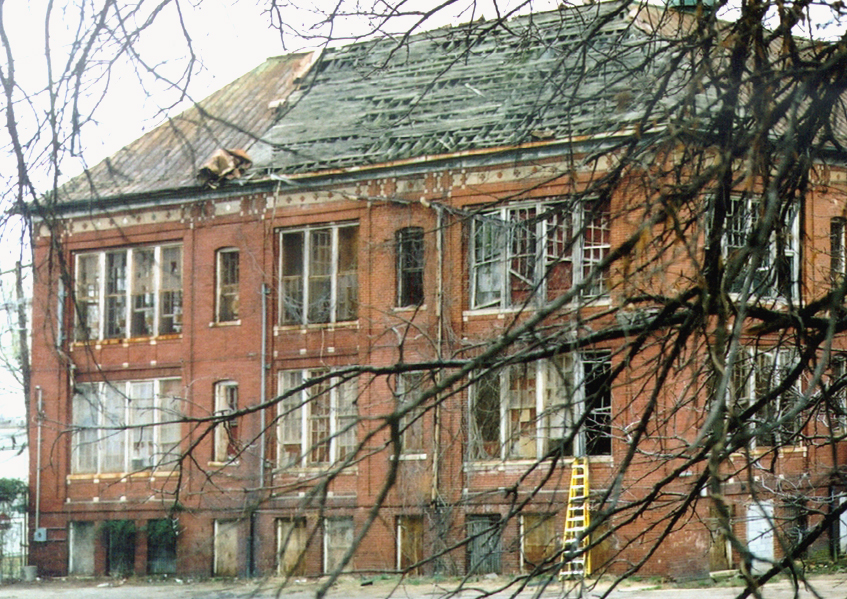 Alexander Crummell School
Alexander Crummell School
He sat one morning gazing toward the sea. He smiled and said, “The gate is rusty on the hinges.” That night at star-rise a wind came moaning out of the west to blow the gate ajar, and then the soul I loved fled like a flame across the Seas, and in its seat sat Death.
I wonder where he is to-day? I wonder if in that dim world beyond, as he came gliding in, there rose on some wan throne a King,—a dark and pierced Jew, who knows the writhings of the earthly damned, saying, as he laid those heart-wrung talents down, “Well done!” while round about the morning stars sat singing. (source: W.E.B. DuBois, Souls of Black Folk)












